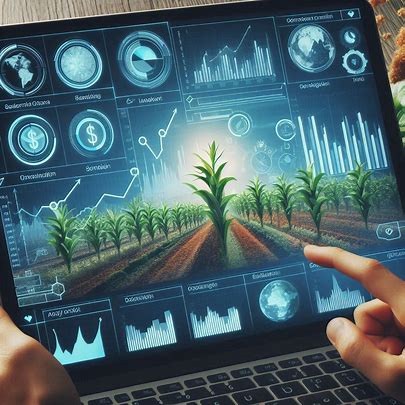
Artificial intelligence (AI) is revolutionizing industries, and agriculture is no exception. Farmers and investors now leverage automated investment strategies to maximize profits, improve efficiency, and ensure food security. With AI-driven tools, agricultural investments are becoming more data-driven, reducing risks and increasing returns.
As the agricultural sector embraces digital transformation, investors discover new opportunities to grow wealth through AI trading. AI-powered analytics, predictive modeling, and machine learning are helping investors make smarter financial decisions in farming, from crop selection to risk management.
The Rise of Automated Investment in Agriculture
Traditional farming investments often relied on intuition and experience. However, modern technology has introduced automation, allowing investors to use data-driven insights to optimize agricultural investments. AI platforms analyze market trends, soil conditions, and climate patterns to accurately forecast yields and profitability.
Automated investment platforms use machine learning to assess risks and suggest the best strategies for maximizing returns. These tools consider multiple factors, including weather fluctuations, global trade policies, and consumer demand, making more precise and efficient investment decisions.
How AI-Driven Tools Are Changing Agricultural Investments
AI-driven investment platforms are helping both large-scale and small-scale investors make informed decisions. These technologies assist in various aspects of agricultural finance, including:
1. Predictive Analytics for Crop Selection
AI algorithms analyze historical data to determine the most profitable crops in a region. By considering factors such as climate, soil quality, and market demand, investors can make data-backed choices that improve returns.
2. Automated Risk Assessment
Risk assessment is crucial in agriculture. AI tools evaluate potential risks of weather, pests, and market instability. Investors can implement preventive measures to safeguard their investments by predicting challenges before they arise.
3. Smart Irrigation and Resource Management
Water and fertilizer use can be optimized through AI-powered systems. These technologies analyze soil moisture levels and recommend precise irrigation schedules, reducing waste and increasing efficiency.
4. Market Trend Analysis
AI-driven platforms monitor global trade trends, consumer preferences, and commodity prices. By providing real-time data, investors can adjust their strategies to meet market demand.
The Impact on Global Food Security
Automated investment strategies are enhancing profitability and addressing global food security challenges. By optimizing resource use and reducing waste, AI-driven tools help farmers produce more food with fewer resources.
Additionally, these platforms enable investors to support sustainable farming initiatives. AI-powered precision agriculture techniques promote environmentally friendly practices, reducing the carbon footprint of food production.
READ ALSO: Understanding Current Trends and Their Implications for the Future
The Future of AI in Agricultural Investments
As technology continues to evolve, AI-powered investment strategies will become more sophisticated. Future advancements may include blockchain integration for transparent supply chains, drone-based monitoring for real-time crop health assessments, and robotic automation for harvesting.
The synergy between smart farming and smart finance will continue to drive innovation, making agriculture more profitable and sustainable. Investors who embrace AI-driven solutions today will be better positioned to capitalize on the future of agricultural finance.
Conclusion
Automated investment strategies are transforming agriculture by providing data-driven insights and reducing risks. AI-driven platforms empower investors to make informed decisions, optimize resource allocation, and enhance profitability while promoting sustainability. Integrating smart finance into farming will pave the way for a more secure and efficient agricultural industry as technology advances.
